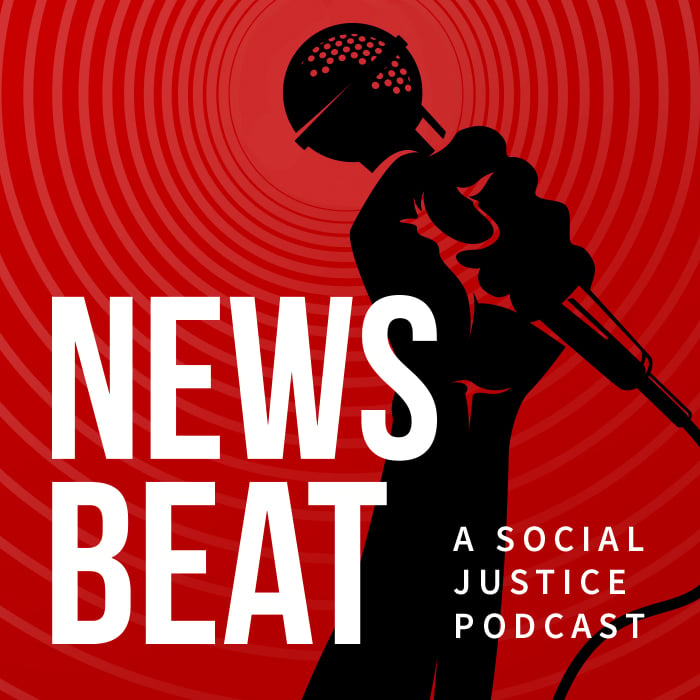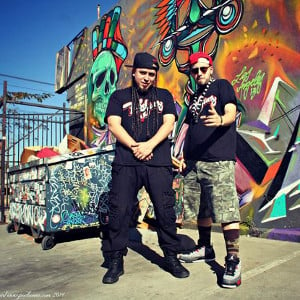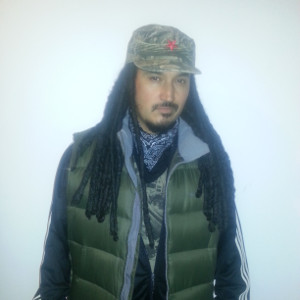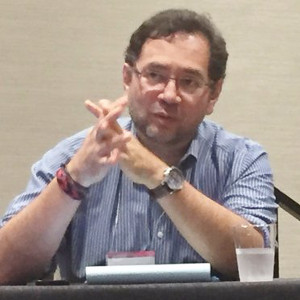Oh, and perhaps most apparent, though not surprising: The Island’s population is very white.
In 2006, Long Island, which includes two counties—Nassau and Suffolk—was a hair under 70 percent white. A dozen years later, Long Island has maintained its white majority but has become more diverse, largely the result of an uptick in immigrants moving to the region, particularly from Central America.
Considering the makeup of the Island, and the uncomfortable reality that it’s one of the most segregated areas in the country, a skeptic would theorize that President Donald Trump’s much-ballyhooed visit last July was no coincidence—calculated, even.
Trump brought his destroying-MS-13-tour to Long Island; specifically, Brentwood, among the most diverse communities on LI.
Brentwood, a Suffolk County hamlet, has experienced a rise in MS-13 activity, and has witnessed particularly gruesome violence. In 2016, gang members brutally killed two girls from the community, which shocked residents and provoked a massive response from law enforcement. One of the victims, 15-year-old Nisa Mickens, was beaten so badly that she was almost unrecognizable, authorities said. This came during a spate of violence that included the discovery of four other victims in a span of five weeks.
“These are some of the worst wounds I’ve seen,” then-Suffolk County Police Commissioner Tim Sini said of the beatings of the two girls.
Trump’s war on MS-13 comes amid a historic immigration crackdown that has immigrant communities on edge and advocacy groups expressing outrage. Among the most vulnerable to ICE raids are unaccompanied minors who fled their home countries to escape violence and forced gang recruitment. Authorities have arrested dozens of teens they suspect to have gang associations and transferred them to detention centers hundreds or thousands of miles away from friends and family.
According to Patrick Young, an attorney and program director for the Long Island-based Central American Refugee Center (CARECEN-NY), immigrants have been arrested on the flimsiest of evidence linking them to MS-13: hanging a Salvadoran flag in a school locker, washing clothes at a laundromat favored by MS-13 members, or having El Salvador’s international calling code (503) written on a textbook.
“It’s sort-of like someone from Manhattan saying ‘212,’ he told News Beat podcast. “It’s a point of pride. It’s the place that they’re from.”
Last November, immigration advocates won a huge victory when a federal judge ruled that authorities could no longer hold minors without presenting evidence that their detention was “justified.”
The ruling was the result of a class-action suit brought by the American Civil Liberties Union. Among those arrested was a minor identified only by his initials F.E., who scribbled 503 on his notebook and admittedly acquainted himself with the “wrong people” at his school in Brentwood.
Like others, F.E. had fled the gangs in El Salvador and arrived in the United States hoping to stay here legally. In June 2017, he was arrested by Suffolk County police and placed into detention by ICE. F.E. was among the more than 5,600 undocumented minors released to sponsors on Long Island since 2015, according to the Office of Refugee Resettlement.
“The government’s treatment of teenagers like F.E. is part of a larger effort to spread fear and misinformation about immigrants in order to justify its harsh enforcement practices,” the ACLU said. “Local police in Suffolk County—where many of our class members are from—have admitted that when they can’t come up with evidence that a juvenile they’re targeting has committed a crime, they accuse the minor of being a gang member, so that ICE can arrest him and put him in immigration detention.”
Members of that same police force in Suffolk served as Trump’s backdrop last July as he pledged to eradicate MS-13. He vowed to “liberate” Long Island towns from gang violence. Officers clapped and grinned, even when Trump suggested they physically injure suspects, gesturing with his hand the common technique cops use to protect a suspect’s head from hitting the top of a police vehicle.
“Few communities have suffered worse at the hands of these MS-13 thugs than the people of Long Island,” said Trump. “Hard to believe. I grew up on Long Island. I didn’t know about this.”
For Trump, the truth may indeed be difficult to comprehend. What often goes unsaid by the president and the media when discussing the rise of MS-13 in the United States is that the gang is an American export. The young people who formed MS-13 in the streets of Los Angeles were refugees fleeing violence and government death squads during the civil war in El Salvador in the 1980s. (Even peasants trying to cross the border to neighboring Honduras were gunned down from the air, sometimes by the dozens.)
“Every day you’d go out and you’d find bodies, particularly in rural areas. Peasants were among the major victims of the army, of the death squads. It was all part and parcel of the government.”
– Raymond Bonner
Ironically, many Salvadorans sought refuge in the very country that supported the oppressive military dictatorship in El Salvador, providing financial and military aid. The support continued, albeit after a brief pause, even after the brutal rape and murders of four American churchwomen, and the assassination of the hugely popular archbishop, Oscar Romero, who is in the process of being canonized. The regime that the United States supported was responsible for 85 percent of the violence during the 11-year struggle, according to findings by the United Nations Truth Commission.
That the United States bears some responsibility for the birth of MS-13 has been largely obscured. Experts, however, say it’s hard to dispute America’s role in helping destabilize El Salvador, the humanitarian crisis that unfolded as a result of the brutal war, MS-13’s origins in the United States, and the gang’s seemingly meteoric rise over three decades. In its fight to stifle the spread of Communism, the United States inadvertently helped create the very gang it now misleadingly blames countries like El Salvador for exporting.
DEATH SQUADS UNLEASHED
Pulitzer prize-winning journalist Raymond Bonner has spent decades of his professional life reporting from inside El Salvador. He covered the “Dirty War” and exposed the murder of almost 1,000 men, women, and children in a village called El Mozote in what is considered the largest massacre in Latin American history. The military outfit responsible for the carnage, the Atlacatl Battalion, received training in the United States.
Bonner, who recently returned from El Salvador, and said there’s no mistaking how MS-13 came to be.
“There’s a direct link between that war, and U.S. support for that war, and the situation today with MS-13 and the gangs,” Bonner told News Beat podcast.
The so-called Dirty War in El Salvador lasted from January 1980 to July 1991, when a peace agreement was finally signed at a castle in Mexico, but not before the war claimed tens of thousands of lives, including large numbers of civilians. The whole nation was seemingly embroiled in the conflict: peasants, innocent civilians, political leaders, and even the nation’s most revered Catholic figure. Much of the violence was committed by so-called death squads that the right-wing military government empowered to stifle the opposition, according to a United Nations Truth Commission report published in July 1992.
“The government’s treatment of teenagers like F.E. is part of a larger effort to spread fear and misinformation about immigrants in order to justify its harsh enforcement practices.”
– American Civil Liberties Union
The conflict in El Salvador arose during a tumultuous time in Latin America. The 1970s was characterized by a rise in left-wing movements “as well as increased government repression” to combat political rivals, the commission reported.
“In 1980 a series of failed military juntas took power, but none were able to quell the violence. By 1981, leftist guerrillas and political groups jointed forces, forming the FMLN. Then, throughout the 1980s civil war was waged between the FMLN (Farabundo Martí National Liberation Front) and the U.S.-backed Salvadoran military forces,” the commission noted.
When the commission concluded its research, it estimated that military dictatorship was responsible for 85 percent of the violence, and attributed 5 percent of violent acts to the FMLN.
No amount of violence seemed beyond bounds: Peaceful protesters were gunned down, mutilated bodies were strewn along roadsides, and extrajudicial murders of political leaders were common. The massacre in El Mozote in December 1981 seemed to underscore the depravity of the military government, and how entrenched U.S. support was for the regime. The attack was carried out by the Atlacatl Battalion—its first operation after it received training in the United States.
Two of the most notable incidents occurred during the first year of the conflict. On March 24, Archbishop Oscar Romero was assassinated during a religious service by the death squads, and on Dec. 2, 1980, four U.S. churchwomen were arrested, raped, and murdered by members of the Salvadoran National Guard. They were buried in makeshift graves along the roadside. As a result, the U.S. government froze military aid for one month, only to reinstate it again. Not only did the U.S. resume aid to the military, it “significantly increased its military and economic assistance,” beginning on Jan. 14, 1981, the commission noted.
Three years into the war and 500,000 Salvadorans were estimated to have fled to the United States.
“We supported everything,” said Bonner, the journalist and author. “We sent advisors. They brought El Salvadorian officers to the United States for training. The infamous Atlacatl Battalion, which was responsible for many of the massacres, had been trained in the United States.”
“The United States gave full support to the Salvadoran government,” he added.
“I was there at the time, and I remember once at Christmas going to the mall and the Christmas music was playing and behind the mall they had dumped the bodies of two students or three students who had their thumbs tied behind their back with wire and they had been shot in the head,” Bonner continued. “And this was classic. And every day you’d go out and you’d find bodies, particularly in rural areas. Peasants were among the major victims of the army, of the death squads. It was all part and parcel of the government.”
The war claimed the lives of 75,000 people in a country of 3 million people, which is about the size of Long Island.
Bonner said there was a simple reason for U.S. intervention in El Salvador.
“There’s no minerals. No one was saying we’re in Central America for the oil, or the silver, or the lithium, or the gold, or anything else,” he said. “It was all an ideological battle against the fear of communism.”
ORIGINS
Bonner captured the violence in extraordinary detail in his book “Weakness and Deceit: America and El Salvador’s Dirty War,” which was first published in 1984 but has been released again by OR Books. He said that during the war a lot of young men—both military deserters or ex-Guerillas, some as young as 10 years old—fled north to the United States, specifically southern California. Once they entered the United States, they found “no community.” They were lost. And after time, in an effort to build camaraderie, they joined gangs.
When MS-13 was first formed, it was a typical gang that consisted of kids who formed bonds on the streets of Los Angeles, said Jose Miguel Cruz, director of Research at the Kimberly Green Latin American and Caribbean Center, Steven J. Green School of International and Public Affairs at Florida University.
“Things started to change in southern California basically when California, and specifically the police department in Los Angeles, started some crackdowns against gangs,” Cruz told News Beat podcast. “And within this crackdown they arrested many kids who had identified already as MS-13.”
It was inside prison where the war refugees-turned-nascent MS-13 members developed the “identity of the sort-of criminal gang” because they started to interact with other gangs.
“There’s a direct link between that war, and U.S. support for that war, and the situation today with MS-13 and the gangs.”
– Raymond Bonner
MS-13’s expansion began when its members were being deported back to El Salvador after the Civil War ended in 1991, and placed in prisons there, Cruz said. Deportations and heavy-handed immigration enforcement has been a hallmark of many presidential administrations, including under Bill Clinton, when large numbers of Salvadorans arrived in the United States.
“Many cases…kids who are trying to basically be part of a group are searching for identity and some sort of autonomy,” Cruz said. “And in many cases, the community and the society where they live, instead of offering sort-of alternatives and opportunities for these kids to get some job opportunities…what they find is they are marginalized, they’re excluded.”
“The governments put them in prisons, and in prisons they were able to network to get in contact with even more ruthless criminal organizations,” he added. “And in a matter…of decades, it became the gang that it is now.”
When the FBI issued its threat assessment of MS-13 in 2008, it noted that the group was active in 42 states and had about 10,000 members. According to Cruz, an expert on U.S. gangs, there’s about 1.4 million people affiliated with gangs in the country, meaning MS-13 accounts for only 1 percent of people who associate themselves with various street groups.
Cruz argues that the government is actually overstating the threat posed by MS-13.
“Indeed, MS-13 is one of the most violent gangs in the Western Hemisphere, but the activities of MS-13 are very different from the activities, and the scope and the impact they have in the United States, is very different from the impact they have in Central America,” Cruz said.
That sentiment is echoed by Patrick Young, the program director at CARECEN.
“It doesn’t seem to have a business plan. People do not get rich being in Mara Salvatrucha,” Young said. “On the other hand it has established itself as the most violent gang on Long Island.”
“The fact that the president and the attorney general not only talk about Mara Salvatrucha on Long Island, but also come here to talk about it, has really built up their reputation as the sort-of badass gang on Long Island and also around the United States,” he added. “A lot of ways it’s a reputation that exceeds its actual power.”
During his appearance in Suffolk County last July, Trump admitted he was surprised to hear about MS-13’s activity on the Island. The group may have been involved in more brutally violent episodes in recent years—its members had killed 17 people over an 18 month span—but the gang is not new to Long Island.
Their roots here began in the 1990s, said Young, who noted that there had been a small Central American community on Long Island going back five decades.
Young, like other immigrant advocates, considers the rhetoric about MS-13 part and parcel of this administration’s war on immigration.
“The unaccompanied children who are the folks who have been most targeted by the Trump administration, both in terms of ICE enforcement and also in the rhetoric of the administration, are actually the kids who did what we wanted them to do,” Young said. “They were children who were approached by Mara Salvatrucha for forced recruitment who said ‘no’ and then were not offered any protection at all by the local authorities and fled to the United States.
In January, the Trump administration ordered the 200,000 Salvadoran TPS recipients to leave. Days later, Trump reportedly questioned why the United States was welcoming people from “shithole countries” during a White House meeting on immigration. Trump was reportedly referring to El Salvador and some African nations.
His decision to end TPS, came three months after Attorney General Jeff Sessions said the administration was putting an end to DACA, the Obama-era program that allowed children brought to the United States by their parents to stay here legally.
Underlining all of this, of course, is an increase in immigration enforcement and deportations, advocates say.
Unaccompanied minors who fled violence are sent back to El Salvador will have a target on their back, Young said.
“It’s easy to pick out who are the people who’ve recently returned from the United States,” he noted. “And they’re thought to have money, and their known to have family members in the United States, so kidnapping them, threatening them…is an easy way for Mara Salvatrucha to raise money back in their homeland.”
Count Bonner, an independent observer, as someone who also believes minors being deported back to El Salvador places them in harm’s way, including TPS recipients who perhaps previously never came into contact with the gangs.
“He’ll be a target of the gangs,” Bonner said, referring to young people. “You either join us or you’re against us.”
The United States has a long history of intervening in Latin America. Before he left office in 2016, President Obama went as far as apologizing to Argentina for the country’s role in its civil war. Bonner said the same is owed to El Salvador.
“It was American support for the dirty war during the 1980s that allowed it to continue,” he said. “We remember the nuns, we remember the Archbishop Romero.”
But, he added, we often forget about the 75,000 people in total killed during the 11-year struggle.
“These people fled because of American policy, and now they’re being sent back, worried about the gangs, and what we’re doing is contributing to the gangs,” Bonner said.
“The United States should probably pour as much money into the country as they did during the war. If they poured it into economic development you might have a chance. But the government forces don’t have a chance against these gangs.”











